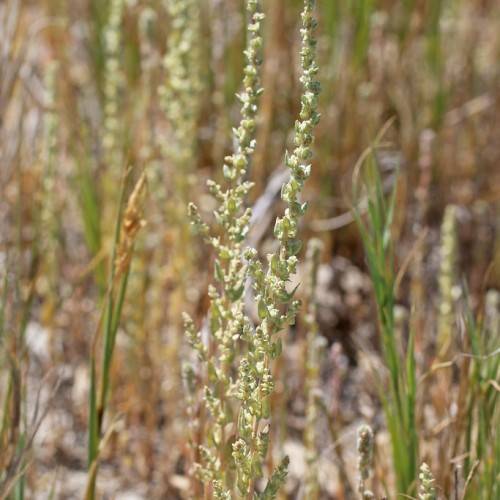
Wedgescale Orache
Atriplex truncata
Also Known As - Wedge OracheWatering:
Minimal
Hardiness Zone:
Sun:
full sun,part shade
Fruits:
Fruits Ready In Fall
Leaf:
Yes
Growth Rate:
Low
Drought Tolerant:
Yes
Salt Tolerant:
Yes
Care Level:
Low
watering
Water the Redscale Saltbush every 7 to 10 days, depending on soil conditions and weather patterns. Make sure to use a soil moisture meter to determine moisture level in the soil before watering. Irrigation can be done either with a watering can or a hose with a nozzle. Aim to give the plant a deep, thorough soaking, allowing the water to run through and accumulate in the tray beneath the plant. Make sure not to keep the roots of the seedlings continuously submerged underwater. Initially, give the plant about 1 to 2 inches of water, increasing as the plant matures. Allow the soil to partially dry out between waterings.
sunlight
Redscale Saltbush (Atriplex rosea) can grow in both full sun and partial shade. It prefers full sun for the best growth and to produce the most flowers and fruit. The plant can tolerate some shade but will do best with 6 to 8 hours of direct sunlight each day throughout the growing season. If the plant does not get the right amount or timing of sunlight, it may become leggy and fail to bloom. For optimal growth and fruiting, these plants should receive 6 to 8 hours of sunlight between 10 am and 4 pm.
pruning
Redscale Saltbush should be pruned twice a year to keep growth under control and to sustain a desired shape. The first pruning should be done in early spring when the bush is just beginning to bud out, and the second pruning should be in late summer or early fall. During the spring pruning, large branches can be cut back to just above an outward facing bud and the bush can be thinned out or “headed back” to encourage dense growth and to shape the saltbush. During the late summer or early fall pruning, any dying, damaged or crowded branches should be removed, and the bush can be thinned out again to maintain an attractive shape.
